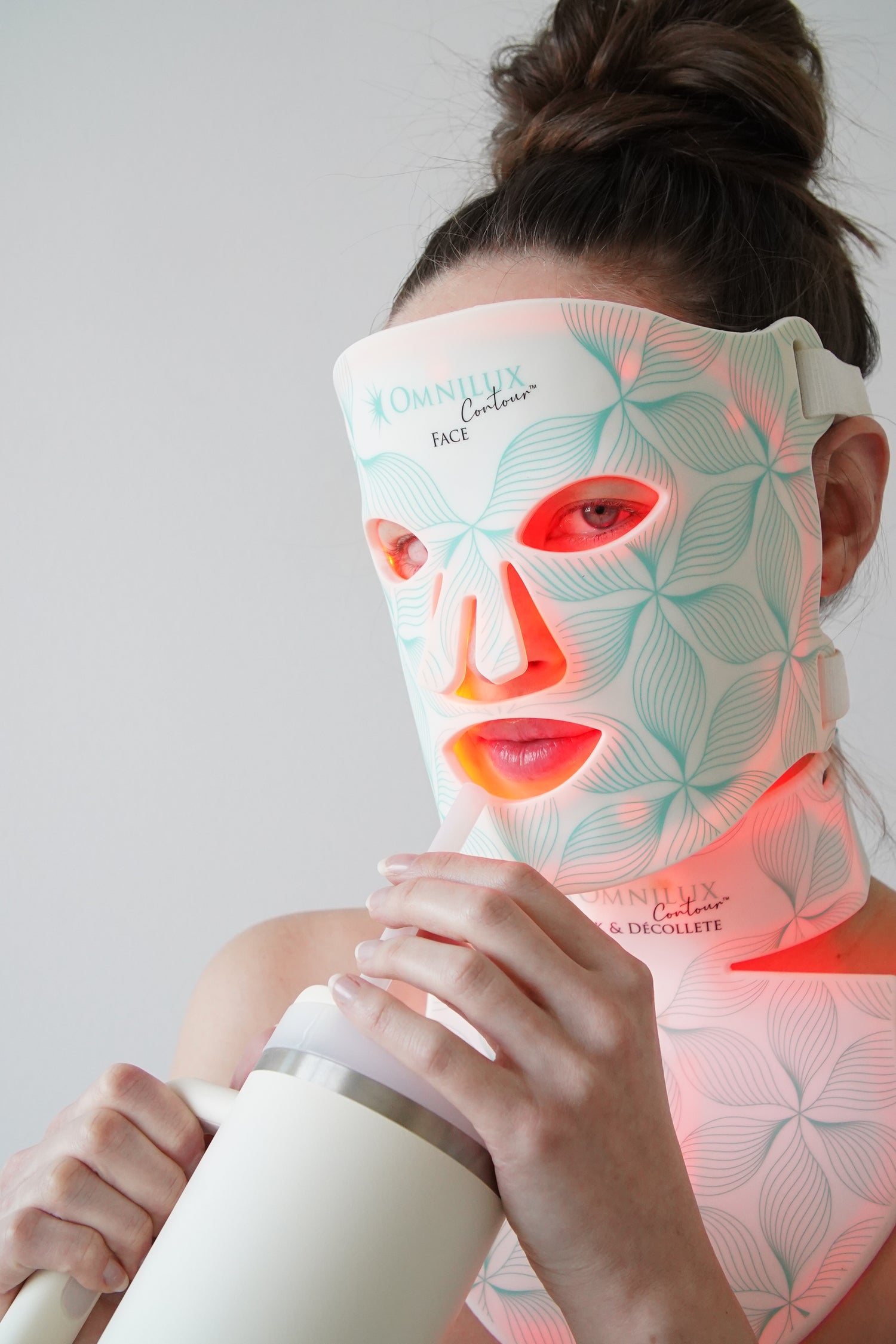We’re all well aware that unprotected sun exposure spells trouble for our skin. Too much time in the sun during any time of year can be detrimental to skin health and cause countless issues. One of the most prevalent skin problems sun exposure exacerbates is hyperpigmentation, aka dark spots or melasma.
While there are different categories of hyperpigmentation (melasma being one of them) with different causes and treatment protocols, the main issue is the prevalence of dark, discolored spots across the skin that typically worsen with sun exposure.
Although there is no “cure” for dark spots, there are ways to highly reduce their visibility and prevent them from reoccurring. Here are my top three tips to prevent and reduce hyperpigmentation, especially if you plan on being outdoors. ☀️
First of all, what is hyperpigmentation, exactly?
Hyper means “over,” “excess,” or “exaggeration,” so you can think of hyperpigmentation as an excessive amount of, or overproduction of, pigment in the skin. These spots on your skin appear darker than your normal skin tone. There are different causes of hyperpigmentation, including:
Post-Inflammatory Hyperpigmentation
Post-Inflammatory Hyperpigmentation is the most common form of hyperpigmentation. It occurs when your skin is healing from a trauma or wound, such as an acne scar. In the case of post-inflammatory hyperpigmentation, the initial goal is to identify and treat the underlying cause of inflammation. Then, you can begin targeting the dark areas/spots.
Primary Hyperpigmentation Disorders (Melasma, etc.)
Melasma is one of the most common hyperpigmentation disorders. Many women experience melasma during or after pregnancy or when taking hormonal contraceptives, as hormonal shifts typically play a large role in it.
Hyperpigmentation as a Result of Chronic Sun Exposure
This type of hyperpigmentation is a form of photoaging that occurs when unprotected UV exposure prematurely damages the skin, causing excess melanin production. In this case (and, let’s be honest, every case), the absolute #1 most important thing is always wearing SPF. Then, you can add additional products to your routine to address dark spots.
Tip #1: Be faithful to your SPF.
One of the most important things to remember when treating and preventing hyperpigmentation is to always wear SPF. No matter what the initial cause of your hyperpigmentation is, SPF is crucial. If you don’t protect your skin from the sun’s UV rays, you can use all the holy-grail skin products you want, but the hyperpigmentation will just come back.
When it comes to SPF, we recommend choosing a physical, or mineral, sunscreen formula. Always make sure your SPF is 30+, and reapply every two hours if outside.
Best Mineral Sunscreen for Hyperpigmentation: ISDIN Eryfotona Ageless
One of our favorite mineral sunscreens is ISDIN Eryfotona Ageless, a mineral-based sunscreen with broad-spectrum protection and anti-aging benefits. Eryfotona Ageless contains a blend of physical blockers such as zinc oxide and titanium dioxide, as well as antioxidants and peptides to help reduce the appearance of fine lines and wrinkles.
TIP #2: Address the underlying cause of hyperpigmentation.
To manage your hyperpigmentation, you must first know what’s causing it. Remember, there are different causes of dark spots.
If you’re unsure about the underlying cause of your hyperpigmentation, don’t be afraid to consult a dermatologist to confirm/find the underlying issue. Then, you can take appropriate treatment action.
Best Skincare for Post-Inflammatory Hyperpigmentation: ELEMENTAL Advanced Hydration Red Wine Essence
ELEMENTAL Red Wine Essence contains powerful antioxidant resveratrol, which helps brighten the skin and helps protect against UV damage. In addition, red algae extract nourishes skin and improves barrier function, and niacinamide fades dark spots and calms inflammation.
Best Skincare for Melasma: ISDIN Melaclear Advanced Serum
Melaclear Advanced is specifically formulated to reduce dark spots related to hormonal pigmentation, meaning it's an excellent choice for those with melasma. This silky gel-texture serum contains tranexamic acid, an ingredient famous for its ability to fade hormonal hyperpigmentation, phytic acid, a gentle exfoliant that improves texture, and ascorbic acid, a potent form of vitamin C that protects from free radical damage.
Best Skincare for Photodamaged Skin: A-LUMINATE Brightening Serum
Alastin A-LUMINATE Brightening Serum banishes unwanted discoloration with powerful, proven ingredients. Ashwagandha soothes inflammation and helps fade pigmentation, and hexapeptides-11 and 12 protect against future pigmentation and decrease melanin production.
TIP #3: Stay committed to your skincare routine.
Now, you’ve got your fav SPF and a good grasp on the underlying issue behind your hyperpigmentation, and it’s all about staying faithful to a skincare regimen that supports your efforts.
By adding in one of these pigmentation-fading products to your skincare lineup, your skin will be luminous and clear this summer!
While no one loves dealing with hyperpigmentation, the good news is there are so many incredible products that can work wonders to boost your skin's appearance and overall health.
If you’re just beginning your journey towards your best skin yet, starting small with consistent habits is okay! Start by focusing on an SPF like ISDIN Eryfotona Ageless, and gradually implement a targeted product like ELEMENTAL Red Wine Essence, Melaclear, or A-LUMINATE that is proven to work for your skin type. It’s possible to have the skin of your dreams this summer and reduce those dark spots once and for all! 😘
Resources
Amy Ingraham and Aurora Garre Contreras, et al. “What to Know about UV Radiation and Your Skin.” ISDIN Blog, 17 Apr. 2023, www.isdin.com/en-US/blog/skincare/ultraviolet-radiation-and-your-skin/.
Boo, Yong Chool. “Human Skin Lightening Efficacy of Resveratrol and Its Analogs: From in Vitro Studies to Cosmetic Applications.” Antioxidants, vol. 8, no. 9, 2019, p. 332, https://doi.org/10.3390/antiox8090332.
Cantelli, Mariateresa, et al. “An Open‐label, Investigator‐initiated, single‐Center, Prospective, Pilot Clinical Study to Evaluate the Efficacy of a Skin Whitening Serum Applied Twice Daily Combined with a Spot‐preventing SPF50+ Sunscreen in Healthy Female Subjects with Melasma Hyperpigmentation.” Journal of Cosmetic Dermatology, vol. 21, no. 4, 2021, pp. 1523–1532, https://doi.org/10.1111/jocd.14271.
“Dermatologist Explains: Hyperpigmentation and Melasma - How to Manage It with Top Picks.” YouTube, 24 Jan. 2022, https://www.youtube.com/watch?v=6PjRxIgSpFU.
“Galderma Launches Novel Formulation with Alastin Skincare® A-Luminate Brightening Serum® Developed to Diminish the Apperance of Hyperpigmentation.” Galderma, 17 Oct. 2022, www.galderma.com/news/galderma-launches-novel-formulation-alastin-skincarer-luminate-brightening-serumr-developed.
Leandro, Adriana, et al. “Diverse Applications of Marine Macroalgae.” Marine Drugs, vol. 18, no. 1, 2019, p. 17, https://doi.org/10.3390/md18010017.
Na, Jung-Im, et al. “Resveratrol as a Multifunctional Topical Hypopigmenting Agent.” International Journal of Molecular Sciences, vol. 20, no. 4, 2019, p. 956, https://doi.org/10.3390/ijms20040956.
Narra, Keerthi, et al. “A Study of Efficacy and Safety of Ashwagandha (Withania Somnifera) Lotion on Facial Skin in Photoaged Healthy Adults.” Cureus, 2023, https://doi.org/10.7759/cureus.36168.
Navarrete-Solís, Josefina, et al. “A Double-Blind, Randomized Clinical Trial of Niacinamide 4% versus Hydroquinone 4% in the Treatment of Melasma.” Dermatology Research and Practice, vol. 2011, 2011, pp. 1–5, https://doi.org/10.1155/2011/379173.
Ndiaye, Mary, et al. “The Grape Antioxidant Resveratrol for Skin Disorders: Promise, Prospects, and Challenges.” Archives of Biochemistry and Biophysics, vol. 508, no. 2, 2011, pp. 164–170, https://doi.org/10.1016/j.abb.2010.12.030.
“Treating Hyperpigmentation - How To Fade Acne Marks, Melasma and Dark Spots.” YouTube, 14 Oct. 2021, https://www.youtube.com/watch?v=TDFMwOwVGlU&t=702s.
Wang, Jordan, et al. “A Multi-Center, Randomized, Blinded Clinical Study Evaluating the Efficacy and Safety of a Novel Topical Product for Facial Dyschromia.” Journal of Drugs in Dermatology, vol. 22, no. 4, 2023, pp. 333–338, https://doi.org/10.36849/jdd.7340.






